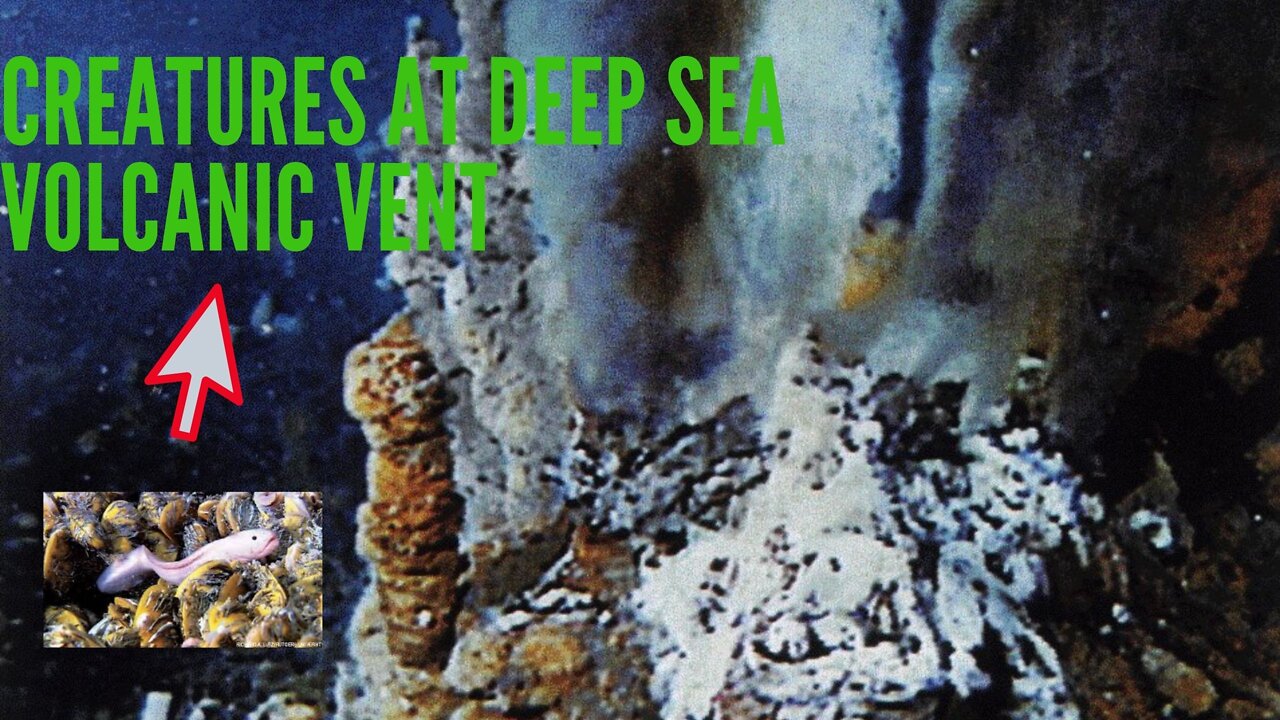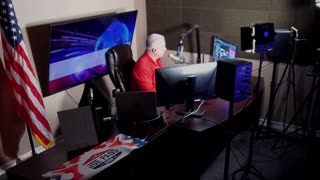Premium Only Content

🐙#Deep-sea #creatures at #volcanic vent!🐙
#Deep-sea #creatures at #volcanic vent!
🌍Remarkable images of life from one of the most inhospitable spots in
the ocean have been captured by scientists.
🌍Researchers have been surveying volcanic underwater vents - sometimes called black smokers - in the South West Indian Ridge in the Indian Ocean.
🌍The UK team found an array of creatures living in the super-heated
waters, including yeti crabs, scaly-foot snails and sea cucumbers.
🌍They believe some of the species may be new to science.
🌍Hydrothermal vents were first discovered in 1977. These fissures in
the ocean floor spew out fiercely hot, mineral-rich water, yet somehow,
diverse ecosystems are able to thrive in these hostile conditions.
🌍The team, from the University of Southampton, was particularly interested in the vents on the South West Indian Ridge because this range is linked to the Mid Atlantic Ridge and the Central Indian Ridge, where vent life has been well documented.
🌍This area is also unusual because it is an "ultra-slow spreading" ridge, which means it is less volcanically active than other ridges, with fewervents that are further apart.
🌍Dr Jon Copley, chief scientist of the Indian Ocean vents project, said:
🌍"This place is a real crossroads in terms of the vent species around the world."
🌍Using a remote-operated, underwater robot called Kiel 6000, from the Leibniz Institute of Marine Sciences (IFM Geomar), in Germany, the team was able to train their cameras on the vents.
🌍In the hottest habitat around the black smokers, they found snails and shrimp, as well as mussels, sea cucumbers and crabs. They then compared these with the animals found at vents on the neighbouring ridges.
🌍Dr Copley said: "I was expecting there to be some similarities to what we know from the Atlantic, and some similarities to what we know from the Indian Ocean vents, and that was true, but we also found types of animals here which are not known from either of those neighbouring areas, and that was a big surprise.
🌍"One was a type of yeti crab. There are two currently described species of yeti crab known from the Pacific, and it isn't like those, but it is the same type of animal, with long, hairy arms.
🌍"Also some sea cucumbers - not known from the Atlantic or Central Indian vents, but known from the Pacific."
🌍He added: "We've got links to lots of different parts of the world here, which is very exciting."
🌍The team was also surprised at the diversity of life they found during this expedition, which was funded by the Natural Environment Research Council (Nerc).
🌍Dr Copley said: "In a lot of other vent fields I've been to, in this hot zone where you get the animals there is often just one type of animal living there: in the deep Mid Atlantic Ridge, it's the shrimp. But here, we have seen three to four all in the same zone."
🌍The findings should help researchers to learn more about how life moves from vent to vent: vents are short lived, and without the ability to hop from one system to the next, life there would go extinct.
🌍"That is why vents are a great place to understand how species disperse and evolve in the deep oceans, because they are like little islands," Dr Copley added. 🌍Despite these findings, the researchers are worried about the future of this underwater
terrain.
🌍China has been granted an exploratory licence by the International Seabed Authority to explore the potential of mining the vents in this area for their rich minerals.
🌍Dr Copley said: "This vent field is the size of a few football pitches, and it seems possible that it is the only known range of some of these species.
🌍"It would be very premature to start disrupting it before we really know the true extent of what lives in it."
🌍👉Author🌍👉: By Rebecca Morelle
Science reporter, BBC News 🌕Research🌕: Vitor hugo lizardi Leonardi
#creature, #volcano, #sea, #fountains, #rich, #hostile, #breather, #document,
#scientist, #world, #hot, #teacher, #student, #channel, #dark, #canaldark,
-
 LIVE
LIVE
FreshandFit
4 hours agoAfter Hours w/ Dan Cates
22,449 watching -
 1:37:17
1:37:17
Badlands Media
5 hours agoBaseless Conspiracies Ep. 128: The Accelerationist Cults Grooming Kids into Terrorism with BX
73K25 -
 2:44:29
2:44:29
TimcastIRL
6 hours agoBail DENIED For Leftist Who FIREBOMED Democrat Governor's Mansion, Mangione Effect | Timcast IRL
184K83 -
 24:05
24:05
Glenn Greenwald
10 hours agoAs U.S. Censorship Escalates, New Poll Reveals Declining Support for Israel: UNLOCKED Episode
125K115 -
 2:14:50
2:14:50
We Like Shooting
1 day ago $4.87 earnedWe Like Shooting 606 (Gun Podcast)
38.7K1 -
 1:00:41
1:00:41
Donald Trump Jr.
12 hours agoMake Main St Great Again, Interviews with Alex Marlow & John Phillips | TRIGGERED Ep.233
170K52 -
 1:45:23
1:45:23
megimu32
8 hours agoON THE SUBJECT: 2008 Called.. It Wants Its Chaos Back!
52.3K20 -
 1:01:53
1:01:53
BonginoReport
10 hours agoPolitical Violence on the Rise in America - Nightly Scroll w/Hayley Caronia (Ep.26) - 04/14/2025
137K89 -
 1:32:42
1:32:42
BlackDiamondGunsandGear
4 hours agoThey Don’t want you to Purchase 2A Related Products?
30.6K3 -
 DVR
DVR
Joe Pags
8 hours agoThe Joe Pags Show 4-14-25
89.7K